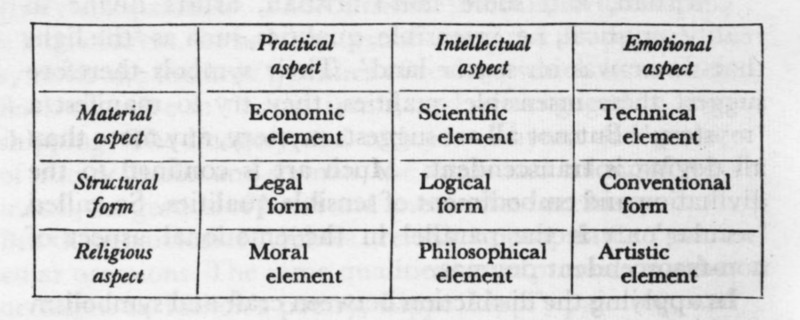-
Title
-
The six elements and three forms of society
-
Description
-
We distinguish then between culture, the social activities which are the positive content of social relations, and structure, the negative form which makes relations possible by limiting them. Structure is sectional as well as general, i.e. it maintains diversity as well as uniformity, and allows of the process of social separation. We find in all relations ·practical, intellectual and emotional aspects, together with material and religious aspects and structural form. Science and philosophy, economics and morality, technique and art, can, we argue, be distinguished in all societies, though their relative autonomy is much greater in civilized than in primitive societies. Philosophy, morality and art are always religious, that is they refer to a supposed ultimate reality, but they can be objectively observed. The six elements and three forms of society which we distinguish may be diagrammatically summarized [in the figure].
These elements and forms are, we repeat, abstractions. In every relation six elements and three forms can be traced. A relation may be predominantly economic or predominantly moral; predominantly scientific or predominantly philosophical; predominantly technical or predominantly artistic; and the form of limitation may be predominantly legal, or predominantly logical or predominantly conventional: nevertheless the other elements and forms enter into it.
-
Designer
-
Wilson, Godfrey
-
Wilson, Monica
-
Date
-
1968
-
Source
-
The Analysis of Social Change: Based on Observations in Central Africa.
-
Bibliographic Citation
-
Wilson, Godfrey and Monica Wilson. 1968. The Analysis of Social Change: Based on Observations in Central Africa. Cambridge University Press. Pages 81-82.
-
depict things of type
-
Typological or Classification

